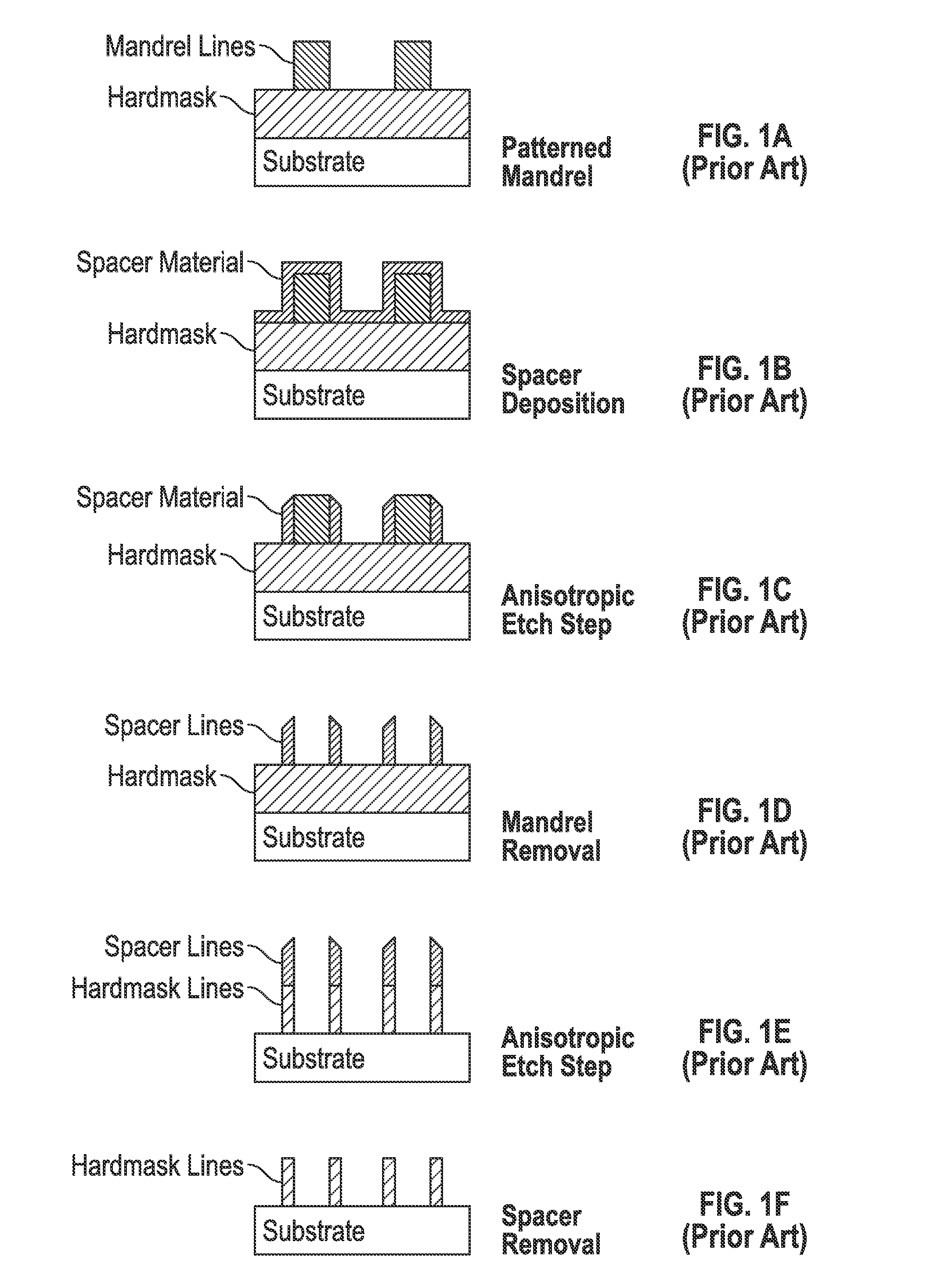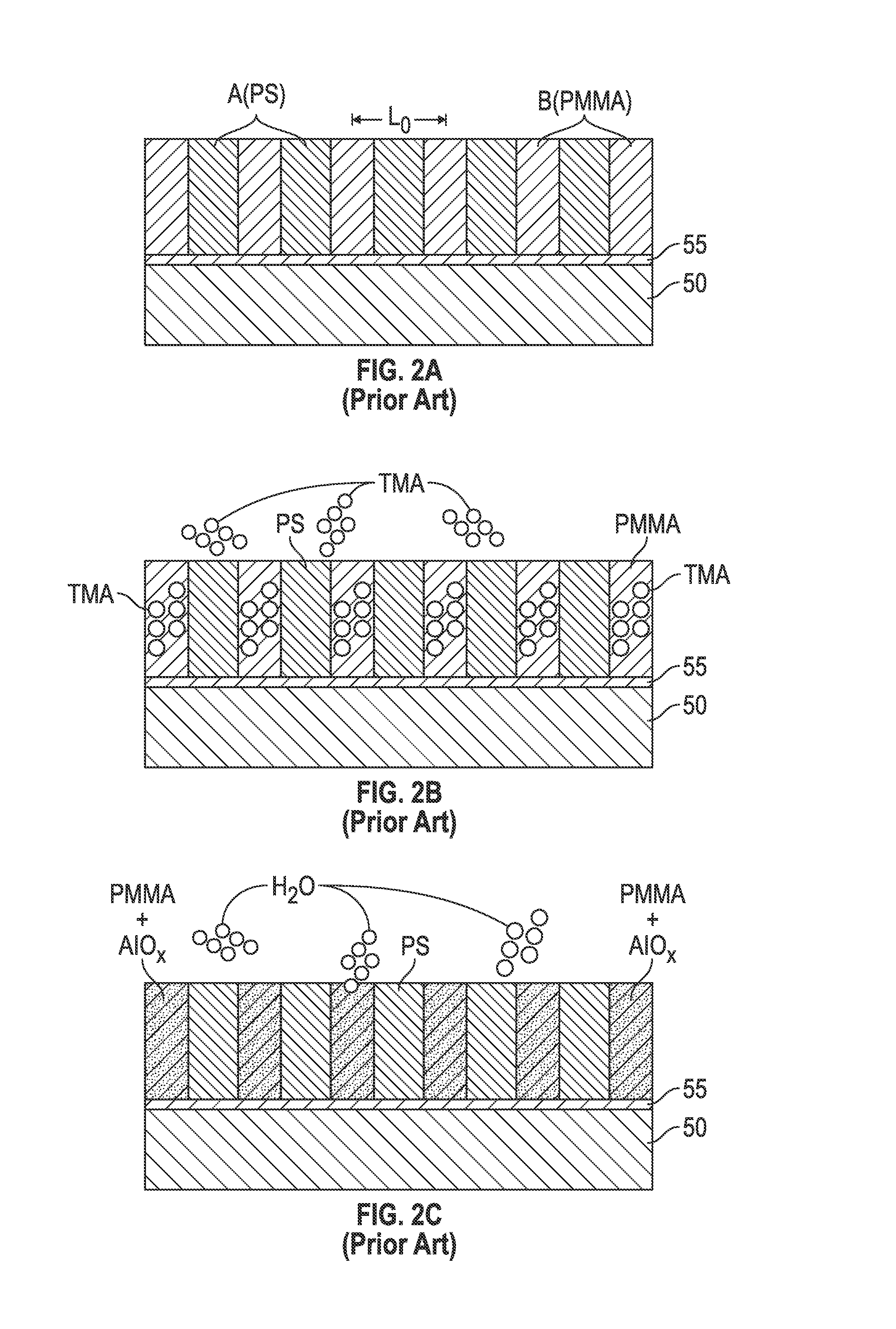Method for line density multiplication using block copolymers and sequential infiltration synthesis
a technology of block copolymer and density multiplication, applied in the field of nanotechnology, can solve the problems of degraded etched substrates, deformation of etched substrates, and tilted sidewall spacers
- Summary
- Abstract
- Description
- Claims
- Application Information
AI Technical Summary
Benefits of technology
Problems solved by technology
Method used
Image
Examples
Embodiment Construction
[0013]Self-assembling block copolymers (BCPs) have been proposed for creating periodic nanometer (nm) scale features. Self-assembling BCPs typically contain two or more different polymeric block components, for example components A and B, that are immiscible with one another. Under suitable conditions, the two or more immiscible polymeric block components separate into two or more different phases or microdomains on a nanometer scale and thereby form ordered patterns of isolated nano-sized structural units. There are many types of BCPs that can be used for forming the self-assembled periodic patterns. If one of the components A or B is selectively removable without having to remove the other, then an orderly arranged structural units of the un-removed component can be formed.
[0014]Specific examples of suitable BCPs that can be used for forming the self-assembled periodic patterns include, but are not limited to: poly(styrene-block-methyl methacrylate) (PS-b-PMMA), poly(ethylene oxid...
PUM
| Property | Measurement | Unit |
|---|---|---|
| Structure | aaaaa | aaaaa |
Abstract
Description
Claims
Application Information
 Login to View More
Login to View More - R&D
- Intellectual Property
- Life Sciences
- Materials
- Tech Scout
- Unparalleled Data Quality
- Higher Quality Content
- 60% Fewer Hallucinations
Browse by: Latest US Patents, China's latest patents, Technical Efficacy Thesaurus, Application Domain, Technology Topic, Popular Technical Reports.
© 2025 PatSnap. All rights reserved.Legal|Privacy policy|Modern Slavery Act Transparency Statement|Sitemap|About US| Contact US: help@patsnap.com



